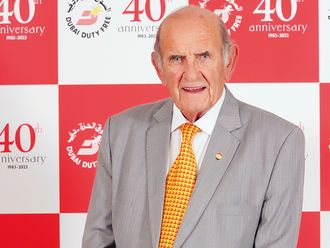
Dubai: Despite the distraction of back to work and more leisure options, UAE viewers for video-on-demand are still putting in the same number of hours as they did during April to June's lockdown phase.
“The “new normal” when it comes to hours spent watching streaming video-on-demand is 18-19 hours a month,” said Danny Bates, Chief Commercial Officer at Starzplay, which competes with the likes of Netflix, Amazon Prime, Apple TV+ and OSN for a share of that viewing (and monthly subscriptions). “That’s still on par with hours spent between April to June, when the cities were in lockdown mode.
See More
“Viewing hours dropped in July, August, but have since recovered to near yearly highs.” Before COVID-19 broke out, average viewing hours a month in the UAE and Gulf was about 12-13 hours.
Two growth engines
Online grocery and web-based video-on-demand in the UAE and Gulf recorded unprecedented growth during April to June, while just about every other consumer category felt the full brunt of the pandemic.
Subscriber numbers spiked… and by the looks of it, the majority are still remaining to watch the rest of the shows. StarzPlay says it added 600,000 subscribers in the year-to-date, with the UAE and Saudi Arabia making up 70 per cent of these.
Netflix does not provide regional breakdown numbers, and the same is the case with the others. But market sources reckon all of the contenders made a killing on subscriber numbers up to June.
A lot of catch up
Even with this kind of growth, web video-on-demand in the region is still far from being exhausted. Across-the-board penetration levels remain under 10 per cent. So, the thinking is straight forward – keep pushing more content viewers’ way and they will stick on. The formula – lots of Hollywood content, a mix of Indian language movies, and higher Arabic made-to-order series – is working and there is no need for a change.
“What’s fundamentally changed is the pricing to access this content,” said Bates. “If during the pay-TV days, it was $70-$80, web content can now be had at a monthly Dh40 or so. That in itself ties in more subscribers despite all the economies pressures they may be facing.
“For every company in this video-on-demand space, there’s good growth to be had. The only difference would be by how much.”








